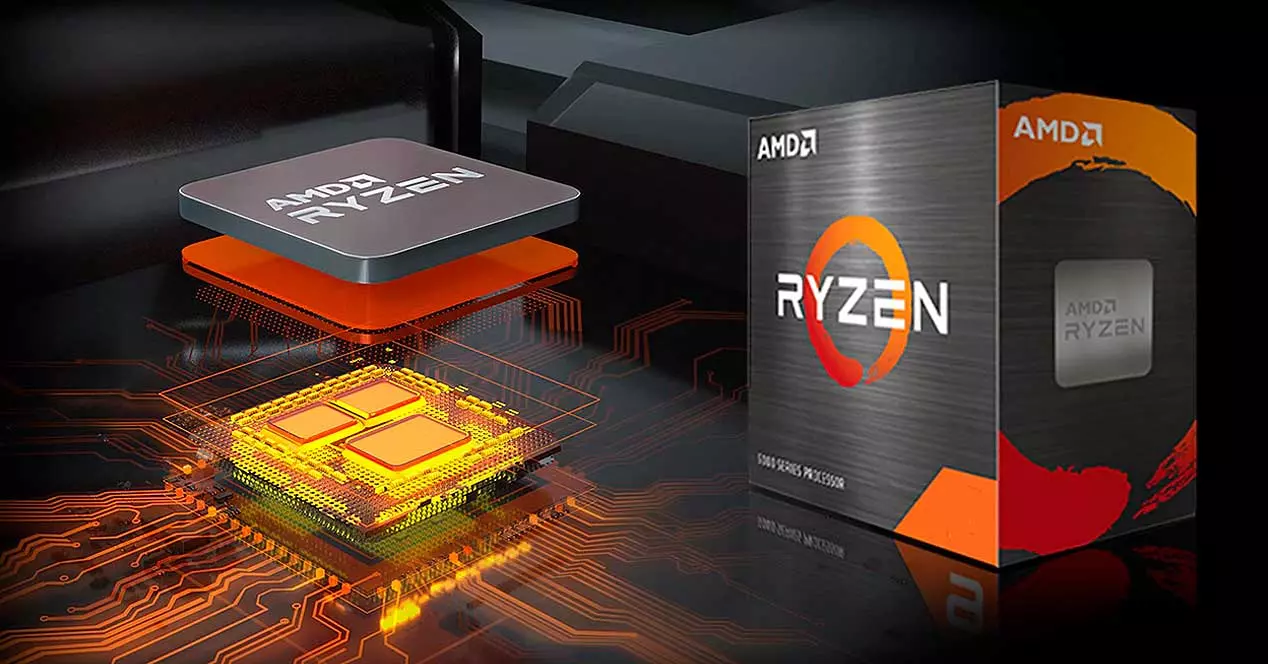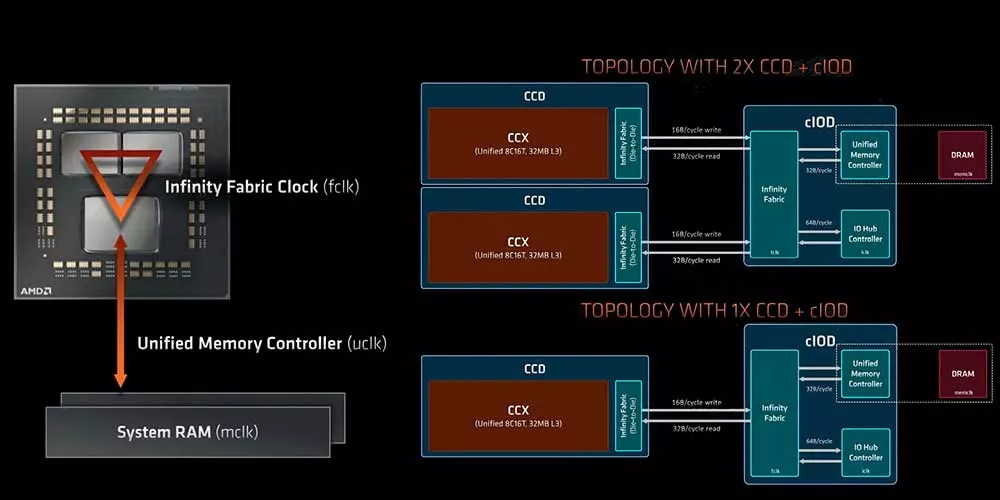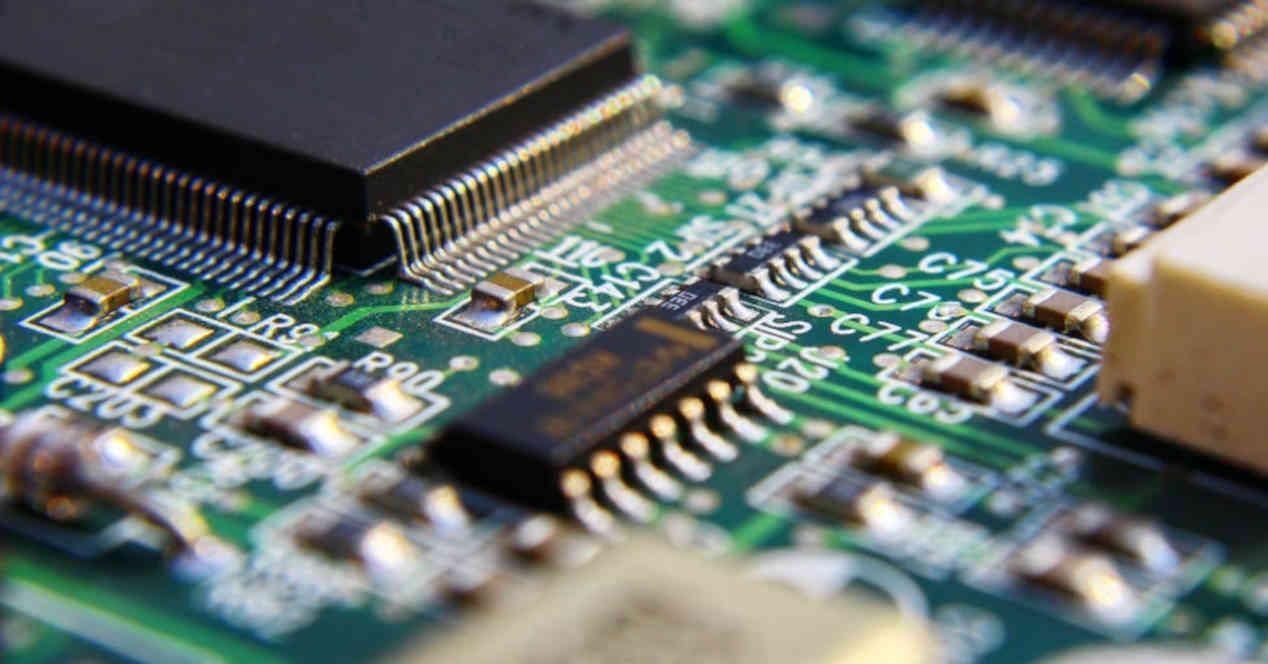
We are all excited about what AMD is going to launch on the gaming PC market in not too long. Intel has put Lisa Su’s men on the ropes and in a single movement in a master move that hits all the sticks, but the red team has at least one weapon in the chamber. The first real performance data on the expected Ryzen 7 5800X3D have not been leaked, but those of its higher counterpart for EPYC 7V73X servers. How much power do processors gain with V-Cache?
The preview of the new EPYC Milan-X arrived last week and we saw how the larger size of its L3 cache achieved a lower overall system latency by having more capacity and thus exchanging less data with RAM. The improvements in this section were slight, although they are surely appreciated in environments such as gaming, but today we already have comparative general performance data.
The increased power of AMD processors with V-Cache
The comparison pits the current EPYC 7763 with 64 cores and 128 threads against 2.45GHz of Base Clock and 3.5 GHz of Boost (256MB of L3) with the new EPYC 7V73X with the same cores, threads and Boost, but with a Base frequency of 2.2GHz and 768 MB of L3 (+512MB). With these data in mind and being a more or less fair comparison (they differ in the Base Clock), how have they been even?
Five tests have been put to the test with both processors to show different scenarios and thus be able to have a first contact with what the Ryzen 7 5800X3D will be on PC. What is shown reveals differences from the 7.6% in Gem5 in favor of the processor with V-Cache, Y-Chuncher only one 1.5% of more, while in OpenSSL it loses by the minimum.
In summary, if we assume that the differences in base frequencies are of the 5% and in many tests like Gem5 this is important, we could say that we have a GAP from 1% to 12.5% of improvement, which is not bad at all, but what about on desktop?
How much would a Ryzen earn in games with its V-Cache?
Can a Ryzen CPU with 2 CCDs benefit from 2x32MB L3 Cache?
▶️ R9 5900X, 4GHz fixed, 6 cores, 1 CCD 6-0 vs 2 CCDs 3-0
SMT on, DDR4-3733 C14, Win 11, overclocked RX 6800 XT, Adrenalin 22.1.2
🧮 1 CCD 6-0 >= CCDs 3-0 (except FC 6) pic.twitter.com/VzCunCplXC
— CapFrameX (@CapFrameX) January 23, 2022
The data is now theoretical, since although a Ryzen 9 5900X is used, an attempt is made to simulate the increase in L3 by changing and balancing the CCD options. What has been done is to test the performance of a CCD with 6 active cores (2 CCX x 3 Cores) and disable the neighboring CCD, while on the other hand the two CCDs with 3 enabled cores each are activated, thereby doubling the total accessible cache from 32 MB to 64 MB, since the Zen 3 topology allows this cache to be shared with all the nuclei.
Why is this done? Well, for a simple reason. AMD does not plan to launch a supposed Ryzen 9 5900X3D or 5950X3D in principle, as it would have to place two cache stacks for each CCD and so far we do not know how this affects performance. Well, with this demonstration that effect is simulated with the simple fact of selectively disabling the cores.
What performance is obtained? Well, the expected. Doubling the amount of cache with 3D V-Cache would not have a positive effect on gaming performance for the simple fact that there is an impact on latencies between CCDs and CCXs. It can be seen perfectly as the CCD with the 6-0 configuration is clearly superior at same frequencies. Is this the reason why AMD will only launch the Ryzen 7 5800X3D knowing that in a CCD it does influence an improvement in gaming? It could be, but it would have been masked with supposedly a higher price per CPU that would push users back in favor of Intel.




